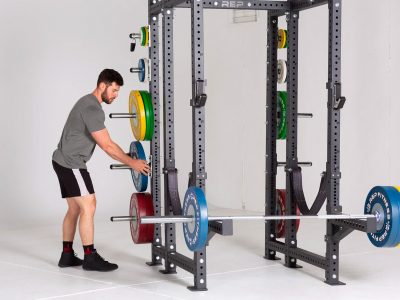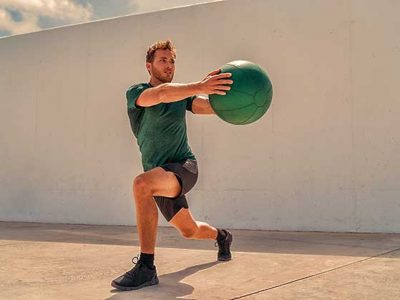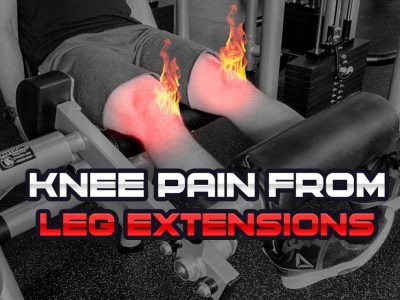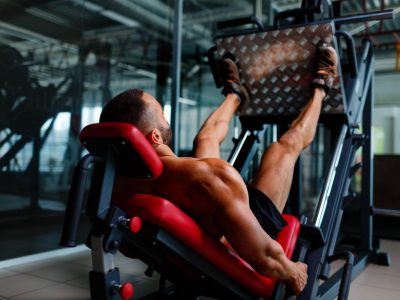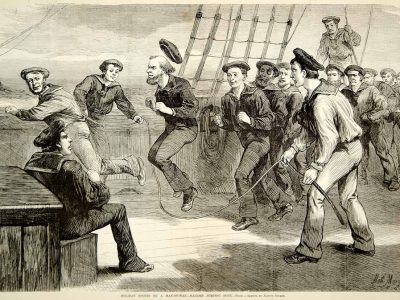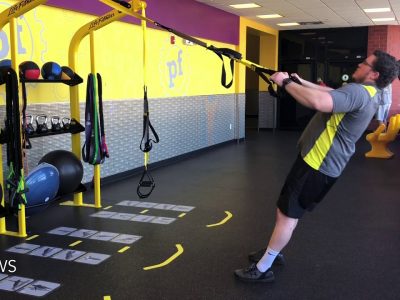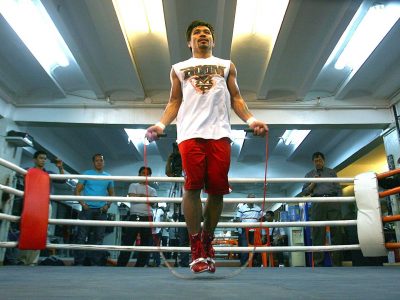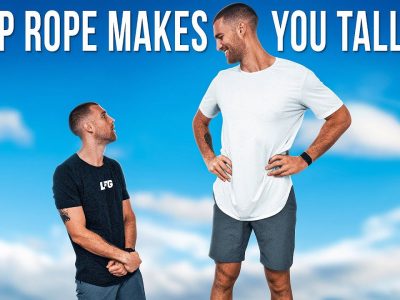Curious about shaping up your calves? Jumping rope, a classic yet often overlooked exercise, might just be your ticket to toned and strengthened calf muscles.
Our blog post illuminates the benefits of this dynamic workout, specifically in its ability to target and beef up those stubborn calf muscles.
Bạn đang xem: Does Jump Rope Build Calves Updated 07/2024
Through sharing effective jump rope exercises, insightful tips for progress, and evidences from fitness enthusiasts like Manny Pacquiao whose renowned calves are a testament to the effectiveness of jumping ropes—you will uncover how integral this equipment can be for muscular development.
Ready to give it a whirl?
The Impact of Jump Rope on Calf Muscles
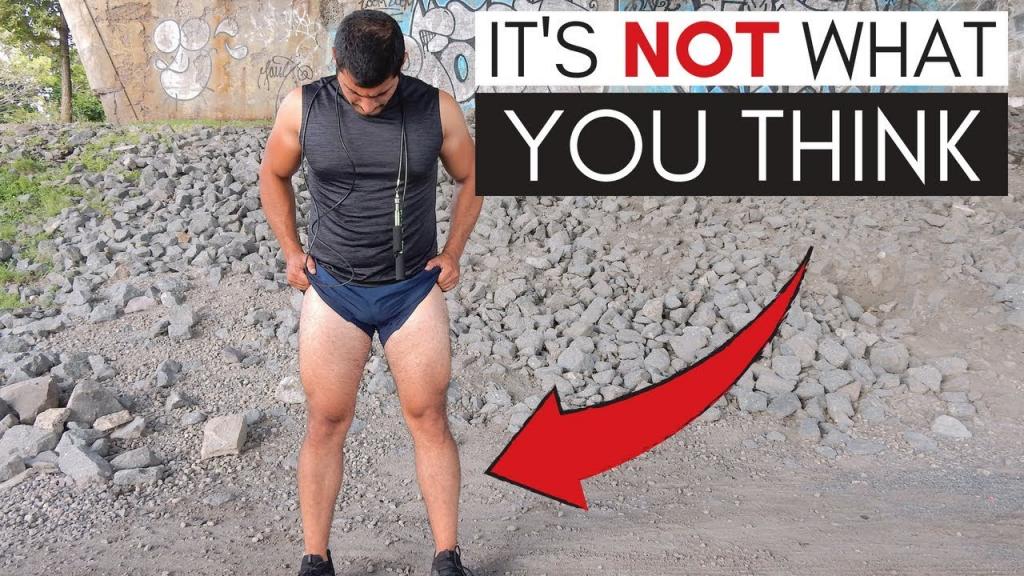
How jump rope targets the calf muscles
Jump rope exercises are superbly effective in specifically targeting and developing the calf muscles. This dynamic workout employs both the gastrocnemius and soleus muscles – the two primary muscle groups within your calves.
During a jump rope session, every hop forces these vital lower leg muscles to contract, which over time improves their strength and definition significantly.
Furthermore, skipping rope does not merely stimulate your calves in isolation; it’s a holistic full-body routine that supports total body conditioning.
Your thigh muscles work with your calf muscles during each leap to maintain balance while also enhancing your overall muscular efficiency.
So if you’re looking for an engaging exercise strategy that invests equal attention on building robust calf strength alongside fostering comprehensive fitness goals, jump roping is tough to beat!
Benefits of jump rope for calf development
Jump rope is an excellent exercise for building calf muscles and improving their strength. When you jump rope, the repetitive motion of jumping engages your calf muscles in a dynamic and challenging way.
The primary muscle group targeted during jump rope exercises are the calves, specifically the gastrocnemius and soleus muscles. These muscles play a crucial role in providing power and stability to your lower legs.
Xem thêm : How To Choose The Right Rowing Machine Updated 07/2024
One of the benefits of incorporating jump rope into your workout routine is its effectiveness in developing strong and defined calf muscles.
Unlike traditional weightlifting exercises that mainly focus on isolated movements, jump roping engages multiple muscle groups simultaneously, including the calves.
This helps to enhance not only muscle size but also overall muscular endurance.
In addition to promoting calf muscle growth, jump rope provides other stamina-enhancing benefits as well.
By incorporating this high-intensity cardio exercise into your fitness regimen, you can improve your cardiovascular endurance while simultaneously strengthening your calves.
Compared to activities like running or biking which may not target the calves as effectively, jump rope offers a more focused approach for calf development.
Best Jump Rope Exercises for Building Calves
Single-leg jumps
Single-leg jumps are a highly effective jump rope exercise for building strong and muscular calves. Here’s why:
- Single – leg jumps specifically target the calf muscles, helping to strengthen and define them.
- By hopping on one leg while jumping rope, you increase the intensity and challenge for your calves.
- This exercise engages the gastrocnemius and soleus muscles in your calves, promoting muscle growth and development.
- Single – leg jumps require balance and coordination, which further enhances the effectiveness of this exercise for calf strengthening.
- Incorporating single – leg jumps into your jump rope routine can help improve overall calf strength and endurance.
Calf raises with jump rope
Calf raises with jump rope are an effective exercise for building strong and muscular calves. Here’s how to perform calf raises with a jump rope:
- Start by standing tall with your feet hip – width apart, holding the handles of the jump rope in each hand.
- Place the balls of your feet on the edge of a step or platform, allowing your heels to hang off.
- Lower your heels as far as you can, feeling a stretch in your calves.
- Slowly raise your heels by pushing through the balls of your feet, lifting your body up onto tiptoes.
- Pause for a moment at the top, then lower your heels back down to the starting position.
- Repeat this movement for 10 – 15 repetitions.
Double unders
Jumping rope with double unders is a challenging and dynamic exercise that can significantly contribute to calf muscle development. Here’s why:
- Double unders involve spinning the jump rope twice under your feet for every jump, requiring a higher level of coordination, speed, and explosiveness.
- This advanced jump rope variation intensifies the engagement of your calf muscles, leading to greater muscle recruitment and growth.
- The rapid rotation of the rope requires powerful and forceful jumps, making it an excellent plyometric exercise for enhancing calf strength.
- Performing double unders consistently can lead to increased endurance in your calf muscles, allowing you to jump for longer periods without experiencing fatigue.
Tips for Effective Calf Building with Jump Rope
To effectively build your calf muscles with jump rope, focus on maintaining proper form and technique throughout each exercise.
Gradually increase the intensity and duration of your workouts to continuously challenge your calves.
Don’t be afraid to incorporate variations and challenges into your jump rope routine to keep your calf muscles engaged and growing stronger.
Proper form and technique
Xem thêm : How Long Do Resistance Bands Last Updated 07/2024
To maximize the benefits of jump rope for calf building, it’s crucial to maintain proper form and technique.
Start by standing tall with your feet shoulder-width apart, holding the handles of the jump rope lightly in each hand.
Keep your core engaged and shoulders relaxed. As you begin jumping, make sure to land on the balls of your feet and use a slight bouncing motion, utilizing the natural springiness of your calves.
Avoid landing flat-footed or with excessive impact to prevent unnecessary strain on your joints.
Additionally, pay attention to your arm movements while jumping rope. Aim for smooth and controlled rotations of the wrists rather than flailing or swinging them wildly. This will help maintain a consistent rhythm and improve coordination between upper and lower body movements.
Gradually increasing intensity and duration
To maximize the calf-building benefits of jump rope, it’s important to gradually increase the intensity and duration of your workouts. Here’s how you can do it:
- Start slow: Begin with shorter jump rope sessions, focusing on proper form and technique. This will help you build a solid foundation and prevent injuries.
- Increase jump rope intervals: As you feel more comfortable, start increasing the duration of your jump rope intervals. Add an extra 30 seconds or minute to each session to challenge your calf muscles.
- Incorporate high-intensity intervals: To further push your calves, incorporate high-intensity intervals into your jump rope routine. Alternate between fast-paced jumping and slower, recovery periods.
- Experiment with different jump rope variations: Try different variations of jumps like double unders or single-leg jumps to engage your calf muscles in different ways. This will not only add variety to your workouts but also target your calves from different angles.
- Use ankle weights or weighted ropes: Once you’ve built strength and endurance in your calves, consider using ankle weights or weighted ropes during your jump rope sessions. This added resistance will further challenge your calf muscles and promote muscle growth.
Incorporating variations and challenges
To build stronger calves and make your jump rope workouts more intense, it’s important to incorporate variations and challenges.
Here are some ideas to take your calf-building jump rope routine to the next level:
- Introduce interval training: Alternate between periods of high-intensity jumping and short rest periods. This will help increase the intensity of your workout and engage your calf muscles even more.
- Try speed jumps: Increase the speed of your jumps to challenge your calf muscles in a different way. This will not only enhance muscle engagement but also improve agility and coordination.
- Jump on one leg: Perform single-leg jumps to focus your efforts on each calf individually. This exercise targets the muscles in your calves more intensely and helps correct any imbalances between the two sides.
- Add resistance: Incorporate ankle weights or resistance bands while jumping rope to add extra resistance for your calf muscles to work against. This will help stimulate further muscle growth and strength development.
- Experiment with different foot positions: Varying your foot position can target different areas of the calf muscles. Try jumping with toes pointed inward, outward, or at a neutral angle to engage different parts of your calves.
- Combine jump rope exercises with plyometrics: Plyometric exercises like box jumps or squat jumps can be performed immediately after jump rope sets to create an explosive, full-body workout that includes challenging calf movements.
- Increase duration gradually: Over time, gradually increase the duration of your jump rope sessions by adding a few minutes each week. This progressive overload will ensure ongoing improvement in calf strength and endurance.
- Mix up jump rope styles: Explore different jump rope techniques like double unders, criss-crosses, or side swings to constantly challenge your calf muscles from various angles and intensities.
Conclusion
In conclusion, jump rope is a highly effective exercise for building strong and defined calf muscles.
By targeting the gastrocnemius and soleus muscles in dynamic ways, jump rope workouts can help increase calf strength, size, and endurance.
Incorporating jump rope exercises into your fitness routine can provide impressive results in developing well-defined calves.
So grab a rope and start skipping your way to stronger calves today!
Nguồn: https://usgyms.net
Danh mục: Gym Equipment

